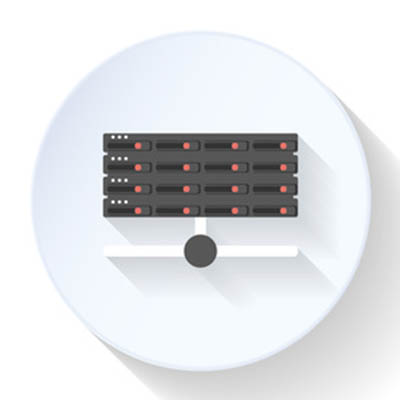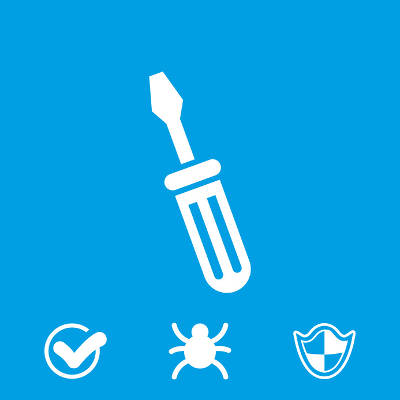Soon Your Network Will Manage Itself

Traditionally, artificial intelligence isn’t thought of positively. In science fiction A.I. systems are usually the antagonist our hero has to overcome; or, more recently, as a knowledgeable sidekick to our hero. Outside of science fiction, however, A.I. has some real uses that make it a benefit to businesses today.
Your Guide to Tightening Up Network Security

Network security is one of the most important parts of running a business, but you might be surprised by how easy it is to fall prey to some of the more common threats out there. It’s not enough to implement endpoint security or train your employees. Comprehensive network security is a considerable investment that requires not only the utmost care, but enterprise level solutions, backed up with the knowledge of security professionals.
We’ll walk you through some of the ways you can tighten up your network security. Remember, the end goal here is to ensure that your business can not only survive a data breach, but prevent one entirely. As such, you need to take a multilayered approach to network security, including endpoint security, best practices, and patching and system updates.
Endpoint Security – Optimizing Network Security
Your business’ technology needs to be properly secured if you hope to stay in business. For example, your company likely employs the use of multiple different types of technologies, including workstations and server units, to get work done and share information throughout the workday. Furthermore, your employees might bring mobile devices to the table, which adds even more endpoints to your business’ infrastructure. All of these devices need to be secured; otherwise, you’re risking your business’ integrity.
A unified security solution like a Unified Threat Management (UTM) device can provide preventative solutions to keep threats from becoming major problems down the road. You can protect your network with a firewall, antivirus, spam blocker, and content filter, all to keep issues away from your data.
User Best Practices – Creating a Mindful Workforce
The next step toward protecting your infrastructure is to handle the user side of things. By this, we mean the end-user, your employees, or the ones actually using your business’ technology solutions. It’s one thing to implement powerful enterprise-level security solutions, but another entirely if an uninformed user lets threats in through a phishing email or clicking on the wrong link. Therefore, you want to take measures to ensure your employees are trained, or at least relatively competent, with security best practices.
You should always express the importance of security awareness training to your staff, as well as password best practices. Doing so allows you to minimize risk, but more importantly, covers your bases so that you know you’ve done everything in your power to secure your organization. By regularly testing your employees on network security and enforcing security-minded policies, you can significantly reduce the risk of your employees being the cause of security threats.
Patching and System Updates – Maintaining Your Infrastructure
It doesn’t matter how many devices your business owns and uses for operations. Regardless of how many systems are utilized, you will need to patch every system for any potential vulnerabilities. Over time, you might notice in the news that software solutions your business utilizes will become vulnerable to new and emerging threats. In cases like this, you will need to implement patches and security updates to any affected systems. If you don’t, you’re putting your business at unnecessary risk.
Automating patching and system updates will allow your company to focus on more important things, like operations, instead of worrying about how long it will take to update your software and operating systems. In fact, most of these patches and updates can be applied remotely, eliminating the need for an on-site visit.
If your business is concerned about network security, you should consider working with a managed service provider to both augment and reinforce your current network security practices. Catalyst Technology Group can equip your network with all of the above tools so that you can ensure there is minimal risk associated with security troubles. To learn more, reach out to us at (317) 705-0333.
Take Advantage of Comprehensive Network Security with UTM

Network security is one thing that rarely stays the same for any business–especially with the ever-changing threat landscape on the Internet. No matter how much time you spend preparing for security troubles, you’ll always be caught unawares if you never assume that the worst will happen. You should be taking advantage of both traditional security solutions, as well as new and emerging tools that help you keep advanced threats at bay.
Regardless of how much your business’ technology grows, there is always going to be the possibility that even some basic threats could cause trouble for your organization. For example, your workstation will be vulnerable to threats like viruses, malware, spam, and many others if you choose to forego traditional protection solutions like an antivirus or firewall. Furthermore, even consumer-grade protections are often not enough to keep more advanced threats at bay.
It’s all a matter of cost. Managed service providers make these services more affordable for small businesses. A Unified Threat Management (UTM) tool is the ideal solution for many SMB security woes. A UTM includes enterprise-class solutions like a firewall and antivirus that keep threats from making an impact against your business, as well as spam protection and content filtering to keep issues out of your infrastructure in the first place. This saves you a considerable amount of time and money, as eliminating threats after the fact can be both wasteful and risky.
There are also other security solutions that you’ll want to consider, namely two-factor authentication and biometrics. Two-factor authentication allows your organization to add a secondary credential to any login portal so that hackers have more trouble accessing sensitive information. An example of a two-factor authentication system is having a code sent to your smart device, which would then be input following your password. Hackers don’t want to do more work than necessary, so if you make accessing your account challenging, they are less likely to pursue the opportunity.
Biometrics make things more complicated for hackers as well. Biometric technology uses your body’s natural identification systems to ensure that only you are accessing your accounts. Scanning your iris or fingerprints are two examples of biometrics that keep hackers from cracking your security protocol. Unless a hacker has a picture-perfect copy of your eyes or fingers, they’ll have a difficult time stealing anything from your accounts.
How does your business keep itself safe from hacking attacks? Regardless, Catalyst Technology Group can help. To learn more, reach out to us at (317) 705-0333.
Which is More Secure, Your Mobile Network or Wi-Fi?

For the modern business, having a strategy to manage your employees smartphone use is essential. This is because most of the people that work for you have smartphones. One study shows that upwards of 90 percent of people under 30 own a smartphone. If you have any design on running a business, or employing millennials (who are the largest generation in the current workforce), you’ll need to know what you are doing to protect your business from the increasing amount of threats that are out there targeting smartphones.
An annual Wi-Fi Security Report conducted by Wandera found that, out of a sample of 100,000 corporate-owned mobile devices, 74% of wireless data was transferred using a Wi-Fi network, 12 percent of Wi-Fi hotspots used by those people are open and lacking encryption, and only four percent of these corporate-owned devices have been exposed to malware through an accidental or deliberate man-in-the-middle attack.
The man-in-the-middle attack (MiTM) is one where a computer will pick up malware that allows an intermediary to intercept files and correspondence between the two machines, and upon connecting to a network via a Wi-Fi connection, transfers the malware onto the computing network–thus infecting the network with the malware that allows the hacker to intercept any communication.
It’s largely understood that cellular networks are more secure than Wi-Fi networks, as cellular networks utilize high-end encryption techniques. This doesn’t make them popular, however. People will typically use Wi-Fi that is available. In fact, one statistic suggests that people are so addicted to the use of Wi-Fi that upwards of 60 percent of people will connect to any available public Wi-Fi rather than use the cellular data, even if they don’t pay for it themselves. Symantec’s Wi-Fi Risk Report corroborates this notion, adding that roughly the same number of people believe their personal information is more secure transmitted over Wi-Fi, and that 53 percent cannot tell the difference between a secure and unsecure Wi-Fi network. The report goes on to state that nearly nine out of ten consumers have put their information at risk by using public Wi-Fi.
At the business level things get a little better. While individual Wi-Fi use remains similar, businesses typically do a much better job of securing their network to keep malicious entities out. One way they do this is by setting up a firewall to keep their Wi-Fi networks away from the rest of their network. Typically, when a person accesses your organization’s Wi-Fi, they are then able to access your whole entire network. If your servers and other confidential data are linked to your organizational Wi-Fi, then an intruder who can manage to connect will then have access. By separating your Wi-Fi from your network behind a firewall, you will not only protect yourself from ambitiously malignant people on your network, but also go a long way toward safeguarding your network from cyber attacks in general.
Another way that the business can ensure their mobile strategy won’t hamstring their company’s network is by instituting a Virtual Private Network (VPN). The VPN brings additional encryption to data communication by creating a secure tunnel in which to transfer data. For the small business a VPN has become an almost essential part of providing your staff with a workable remote computing situation. Not only does it work to secure your business’ data while using available remote connections, it makes it easier to scale a business by allowing new systems to connect to it with minimal configuration. In doing so, the deployment of a strategic VPN reduces capital investment and is a major benefit for organizational mobility.
If you haven’t already, your business is going to have to address your mobile security before it gets burned. If you would like to learn more about what you are up against, or how you can utilize today’s security technology to protect your business’ important data, call Catalyst Technology Group today at (317) 705-0333.
Investing in Innovative Network Security a Must

In 2018, enhancing cybersecurity has to be at the top of every business owner’s to-do list. If your business relies on Internet-connected computing at all, you need to invest, and invest wisely in innovative security constructs. Fueled by demand, organizations from around the world have made a point to protect themselves, their data, and their customers’ personal information against some of the most sophisticated threats ever created. They’ve done so in many ways that include utilizing cloud computing, biometric identification and authentication, security analysis, and managed security services.
There is more to it than throwing money and time at the problem. Here is a comprehensive list of some of the ways organizations from around the world have prioritized cybersecurity.
- Education and training – By training your staff on the fundamentals of cybersecurity, you are doing your company, your vendors, and your clients a big favor. They just may take some of what they’ve learned and use it for their own protection. Understanding the risks that are prevalent today, will help your business see tomorrow.
- Prioritize risk management – Making risk management, that is in this context the action of mitigating risk brought by threats that include software vulnerabilities, hacking attacks, and malware, a management-level responsibility makes cybersecurity governance an organizational priority.
- A multi-layered security approach – By tracking the movement of data out of your network, and prioritizing the protection of said data, you also protect the architecture that runs on that network.
- Threat monitoring and sharing – Sharing threat data with vendors, clients, and other entities, can have a positive effect on your organization’s ability to mitigate risk because, by-in-large, those organizations will share the threats they encounter with you.
- Effective breach response – With the use of innovative tools that include enterprise firewalls and spam filters, the moment a breach is reported, a breach response plan will eliminate the danger quickly and quarantine any data that shows any sign of corruption.
- Testing – Routine penetration tests to the network, as well as staff breach awareness tests can go a long way toward limiting your organizational exposure to cyber threats.
Innovative solutions and practices to ward against malware and other threats are essential for today’s business, and can endanger you company if not made a priority. To learn more, reach out to us at (317) 705-0333.
Without These Tools, Your Network Isn’t Secure

Your business might have a limited budget, but this shouldn’t hold you back from implementing the best and strongest security solutions. However, security isa complicated process for any business. This is problematic, especially since common threats and vulnerabilities show up frequently in the business environment. We’ll walk you through some security basics so that you can optimize your organization’s protection.
First and foremost, the basic tasks of security tools can be accomplished through the use of preventative solutions found in a Unified Threat Management (UTM) device. A UTM includes a firewall, antivirus, spam blocker, and content filter, allowing you to reduce the number of threats your business is exposed to and prevent hacking attacks entirely.
Firewalls
Firewalls are generally considered the bouncers to your business’ network, as they keep track of the traffic that flows into and out of it. This keeps harmful threats from entering and causing trouble, and keeps dangerous traffic from spreading to other parts of your network. You can then isolate and destroy any threats that are identified as problematic. Most computers these days come with a consumer-grade firewall pre-installed, but you don’t want to rely on these for your business’ security. An enterprise-grade firewall found in a UTM can be just the thing you need to keep your network secure.
Antivirus
While your firewall is busy keeping threats out of your network, the antivirus will be the force responsible for quarantining and eliminating any that do slip past the defenses. Antivirus programs scan your computer for any abnormalities, and then take action to eliminate them.
Spam Protection
Spam is something that even the average PC user will encounter, as these messages in your inbox waste your time and threaten the security of potentially important information. If you don’t take a preventative stance against spam, it could bother your employees and trick them into clicking on the wrong links or attachments. Spam is the preferred method of travel for threats, as it’s easy to hide malicious code in embedded links or images, as well as attachments. With spam protection, you can keep these messages from getting to your inbox in the first place, saving you the time and effort required to comb through it for threats.
Content Filtering
If you have some employees who can’t seem to keep themselves off of social media or YouTube, how do you keep them on task? The best solution to this is a content filter, which allows your organization control over the website users’ access on the Internet. This also allows you to keep your employees from accessing sites that contain malicious, dangerous, or distracting content, allowing you to get more productivity out of your workers while maximizing security.
To take your business’s security to the next level, consider a UTM solution. To learn more, reach out to Catalyst Technology Group at (317) 705-0333.
A Network Audit Is A Good Idea. Here’s Why

Does your organization have an internal IT department? If so, you’ve probably noticed that they are too busy problem solving to focus on improving your infrastructure. If they do have time to innovate, chances are they’re neglecting important maintenance. All it takes to improving your infrastructure and operations is, contacting your local managed service provider.
The best way to know how to improve your infrastructure is to know where you’re currently falling short. You can accomplish this with a network audit, which can take a look at your current infrastructure setup with the intention of identifying weak points, where there are opportunities for improvement. This can come in the form of software updates, hardware upgrades, and security patches. We’ll delve into some of the best reasons how a network audit from Catalyst Technology Group can help your organization.
Identify Network Troubles
Your network’s data flow can be complex enough that you might not notice any inefficiencies at first glance. Of course, no two networks are the same, so the solution that works for one organization will likely work differently for another. A network audit can help you identify the specific needs of your network. For example, a network bottleneck could restrict the flow of data and prevent issues that bite you later on in the day (think of an email backup–receiving the day’s email messages all at once at the end of the day). The best way to find these issues before they cause trouble is to use a network audit to find them.
Discover Hardware Issues
How long have you been using the same servers and workstations? If it’s been around for even a couple of years, there is a significantly higher chance of your business suffering from a hardware failure. This type of disaster is something that is completely preventable thanks to a network audit. We can take a look at your network and discover warning signs that point toward hardware failure. You can then take measures to prevent these issues altogether.
Patch Up Security Problems
Software is mandatory, but it can be annoying as it needs to be updated so frequently in order to keep vulnerabilities under control. New threats develop every day, and they need to be handled in a preventative fashion so that you don’t accidentally suffer from a data breach due to a failure to update the software in a timely manner. Unfortunately, with so many workstations and servers at your disposal, you’ll have trouble applying patches to every single one. A network audit can be used to determine which patches need to be applied immediately. Better yet, when combined with Catalyst Technology Group’s remote monitoring and management service that leverages automation to ensure all software is updated regularly, potential problems can be resolved quickly.
The Most Important Benefit of All
A network audit is a valuable opportunity to put a face to the name of the IT professional handling the process. Catalyst Technology Group can provide this network audit, and you can watch our knowledgeable technicians in action doing what they do best. You might even ask us about all of the other services we offer for small businesses just like yours, including network security, data backup, disaster recovery, and remote monitoring and management.
For more information about the services we can offer your organization, reach out to us at (317) 705-0333.
A Network Audit Is A Good Idea. Here’s Why

Does your organization have an internal IT department? If so, you’ve probably noticed that they are too busy problem solving to focus on improving your infrastructure. If they do have time to innovate, chances are they’re neglecting important maintenance. All it takes to improving your infrastructure and operations is, contacting your local managed service provider.
Network Security Needs To Be A Team Effort

Network security is more than just a conscientious attempt by your staff to protect your organization’s digital assets. It’s making sure that your employees know how to handle dangerous situations, implementing preventative IT measures to eliminate potential issues entirely, and having the right technology experts on-hand to handle tough problems that can’t be solved by a few pieces of technology.
To begin, let’s take a look at what role your organization’s IT department plays in the overall security of your business’ infrastructure. We’ll then move on to how the average employee can reinforce network security, and how outsourced help can be beneficial.
Your Internal IT (If Any)
First, the responsibilities of your IT department must be considered. Ordinarily, your IT department would be responsible for tasks such as monitoring your network, installing patches and security updates, and general upkeep of your technology systems. Of course, that assumes that you even have an IT department in the first place, which not a lot of small businesses have. The expense of hiring in-house technicians can add quite a bit of strain to your budget that you may not be able to afford. Or, worse yet, you leave all of the technology-related maintenance to your ordinary employees who have other jobs and responsibilities. This not only takes time away from your business’ busy employees, but also compromises security, as tasks may be rushed or performed wrong entirely.
What Your Employees Can Do
Even if you do have an internal IT department, your employees can practice certain security practices to ensure that they don’t contribute to your business’ troubles. Many issues concerning network security are caused by user error, such as clicking on the wrong link or downloading the wrong attachment. Furthermore, passwords–one of the most critical parts of any security protocol–are often created in such a way that they aren’t secure enough. Passwords should be long and complex, utilizing combinations of both upper and lower-case letters, along with numbers and symbols. They also shouldn’t be the same across the organization, or shared with others. Reinforce that your employees also be wary of any suspicious messages in their inboxes, and advise them to report anything strange or out of place to your IT department.
What You Can Do
Even if you do have an internal IT department, they might be so swamped with work that they don’t have the time to reinforce your network security. On the other hand, if they are dedicated to ensuring the security of your network, they may not have time to deal with the more routine tasks, like assisting with technology troubles or help desk support. Outsourcing your security, as well as general maintenance for your infrastructure, is a great way to assist your internal team with day-to-day responsibilities. Think of it as a way to resolve any bottlenecks that they may be running into, be it a lack of time to properly monitor your network security, or a lack of availability to resolve in-house employee technical difficulties. It’s just one way that outsourced IT solutions can help your business protect itself in the long run.
Does your organization need assistance with IT security? Catalyst Technology Group can help you augment your security capabilities through the use of managed IT services. To learn more about how we can keep your organization secure, reach out to us at (317) 705-0333.
Unified Threat Management Keeps Your Network Safer

Network security is equally important for businesses of all sizes. Ensuring that your infrastructure remains firm is one of the most crucial tasks in managing a business. You don’t have to do it alone, though. There are enterprise-level tools available that can give small businesses the same security standards as larger organizations, and it all starts with a Unified Threat Management (UTM) solution.
A UTM takes four of the best enterprise-level tools and combines them into one great package. You’ll have a firewall, antivirus, spam blocker, and content filter in place to keep your business secure. You’ll quickly discover that this is the best way to handle network security.
Firewall
Your firewall is the first line of defense for your network, tracking any incoming or outgoing data to keep threats at bay. If you keep threats from entering your network in the first place, you’ll decrease the likelihood of your business suffering a data breach or other similar attack. Granted, even the best firewall can’t keep out all threats, which is why the rest of the UTM is particularly important.
Antivirus
You might notice that most desktops come with a consumer-grade free antivirus, but this isn’t ideal for business purposes. It will only provide a minimal defense at best. Meanwhile, an enterprise-level antivirus solution can scan your system to check for any known threats on your network, including viruses, malware, spyware, and so much more. This type of tool is often the only way to find some of the more scrupulous threats on your network, so it’s a critical tool for any business that wants to take network security seriously.
Spam Blocking
Spam can be both a waste of time and a threat to your organization’s security. A single employee downloading the wrong attachment or visiting a malicious website could become a major problem for your business. Data could be compromised in the fallout, which could damage your organization’s reputation and subject it to compliance fines. The most effective way to protect yourself from spam is a proactive solution that keeps suspicious messages out of your inbox in the first place. You can’t click on messages that aren’t there, right?
Content Filter
The Internet contains practically endless threats, and if you’re not careful, they can find their way onto your infrastructure via your employees’ browsing practices. There is malicious content on the web that can install malware or infect your computer with viruses. Furthermore, some websites might try to farm credentials from your employees, including personal or sensitive information. A web content filter can block these websites from being accessed on your network, allowing you to keep employees from accessing unsafe or wasteful online content. Plus, it can be implemented on a per-user basis.
Is your organization’s network lacking proper security measures? If so, Catalyst Technology Group can help. To learn more, reach out to us at (317) 705-0333.

